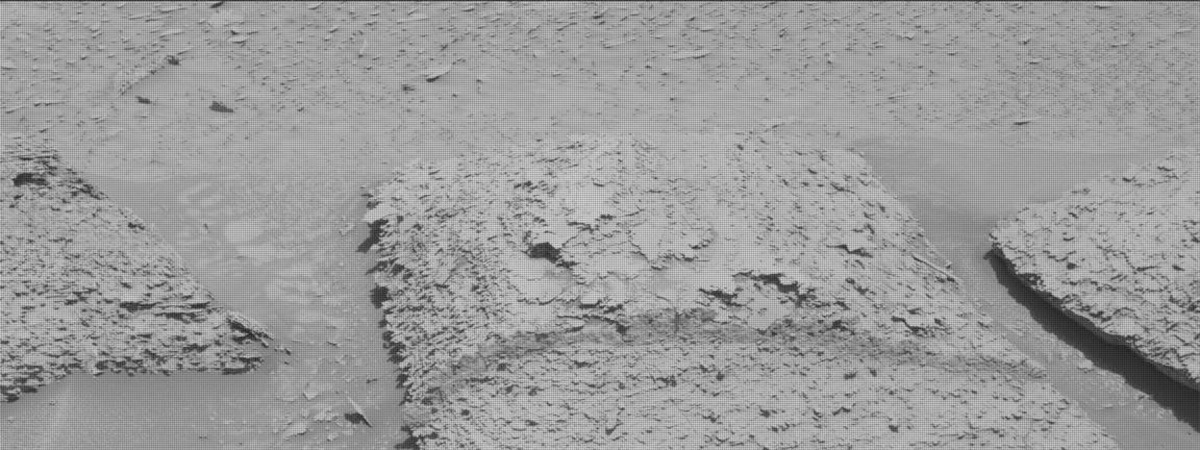2 min read

Earth planning date: May 15, 2023
We are in the midst of our 38th successful drill campaign, analyzing the “Ubajara” bedrock, a sample of what we have been referring to as the “above Marker band” bedrock. Curiosity has been systematically analyzing the bedrock and associated vein and nodular features for chemistry, texture and sedimentology since we left the Marker band and our last drill target, “Tapo Caparo.” We are interested in documenting any changes as we drive up in elevation away from the distinctive Marker band, which may be indicative of changing depositional, or later alteration environments. By drilling Ubajara, which is ~25 m higher in elevation than Tapo Caparo, we can deliver sample to our internal instruments, CheMin and SAM, to further elucidate specific mineralogical and compositional changes, as well as investigate the presence of organic compounds. Today it is the turn of SAM to perform their EGA (evolved gas analysis). The SAM analysis requires significant power, so we must carefully balance the amount of power required by the different activities we wish to perform, with the SAM analysis of the Ubajara sample taking priority. This meant that we had limited time to perform other remote science activities, to enable to the rover to sleep and recharge for as long as possible prior to the SAM analysis.
The geologists and environmental scientists had no trouble filling the time available to them. ChemCam will analyze a dark, vein-like feature in the workspace, “Jardinopolis,” with accompanying Mastcam documentation imagery. Mastcam will also acquire images to extend existing coverage of the area surrounding the Ubajara drill site. To continue monitoring changes in the atmosphere, Mastcam will take two tau images to measure the dust in the atmosphere, and we will acquire a Navcam 360 sky survey and cloud altitude observation. Standard REMS, DAN and RAD activities round out this plan.
We are all eagerly awaiting the results of the additional CheMin and new SAM analyses of our latest, Ubajara drill sample!
Written by Lucy Thompson, Planetary Geologist at University of New Brunswick







